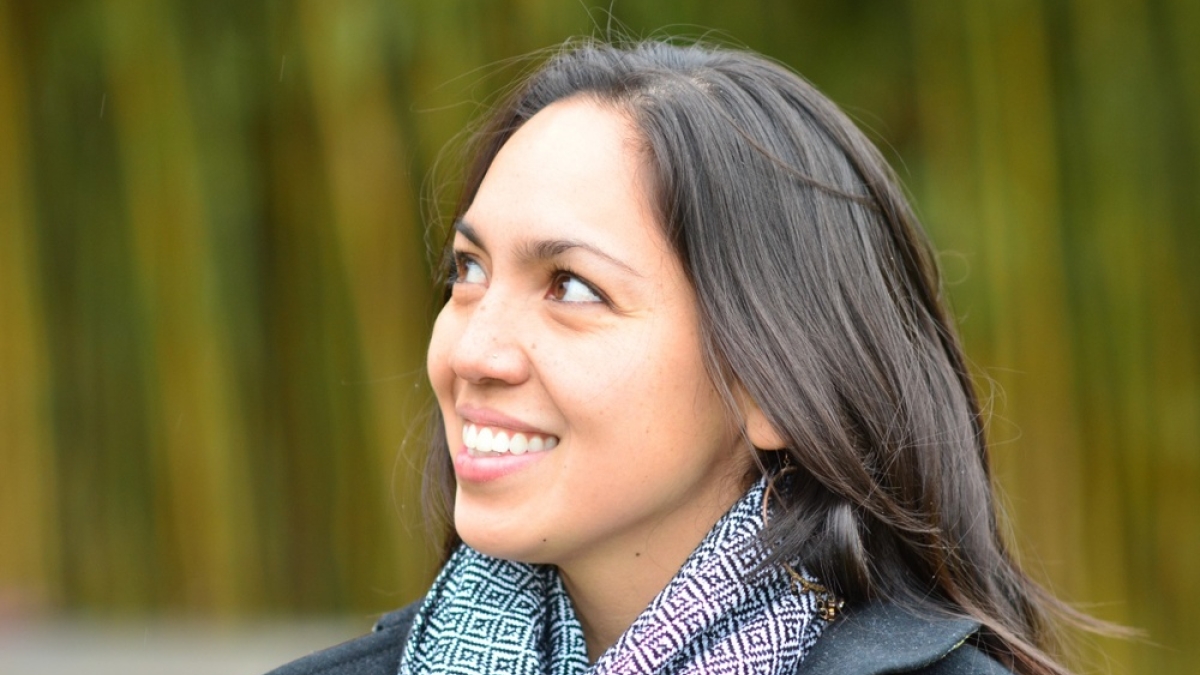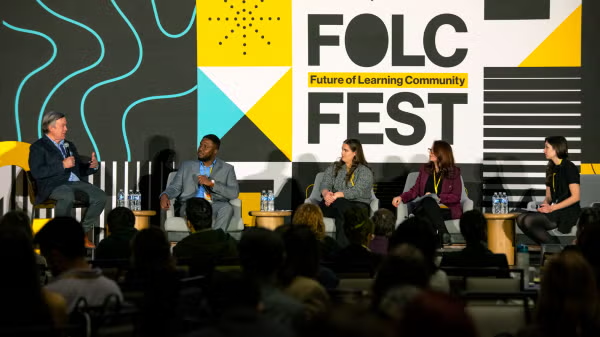One postdoc’s relentless pursuit of a Ford Foundation Fellowship

Alexandrina Agloro is a 2018 postdoctoral Ford Fellow.
Editor's note: To demystify the process of attaining distinguished graduate fellowships, ASU Now will feature a multipart series of interviews with distinguished graduate award recipients from across the ASU community. The series will showcase the achievements of ASU’s distinguished graduate award recipients and highlight the strategies that led to those achievements.
Sept. 17-21 is National Postdoc Appreciation Week, and the Office of Postdoctoral Affairs in the Graduate College will be celebrating all week long.
In keeping with that spirit, ASU Now talked to Alexandrina Agloro for this installment of our "culture of pursuit" series.
Agloro will join ASU as a postdoctoral fellow in January and will be an assistant professor at the School for the Future of Innovation in Society starting in fall 2019. She’s also a Ford Foundation Fellowship recipient.
Competition for a Ford Foundation Fellowship is substantial. It’s so substantial, in fact, that the Graduate College has determined that it’s necessary to offer significant support to ASU applicants to increase their odds of success. The acceptance rate, which varies depending on field (e.g., STEM, humanities, etc.) and type (e.g., predoctoral, dissertation, postdoctoral), can be less than 5 percent.
Through its fellowship programs, the Ford Foundation seeks to increase the diversity of the nation’s college and university faculties by increasing their ethnic and racial diversity, to maximize the educational benefits of diversity, and to increase the number of professors who can and will use diversity as a resource for enriching the education of all students.
One way that the Foundation carries out its mission is by awarding predoctoral, dissertation and postdoctoral fellowships to outstanding applicants who embody and share its mission. Fellows receive an annual stipend of between $24,000 and $45,000 for one to three years, depending on the type of fellowship.
So, what does it take to win a Ford Fellowship? Agloro, ASU’s 2018 postdoctoral Ford fellow, indicates that sheer determination is at least one vital element. She shared some of the details of her Ford Fellowship pursuit, her choice of ASU as her place of research, and her future role as tenure-track faculty at ASU.
Question: How did you find out about Ford Foundation Fellowships?
Answer: So, I have been applying for the Ford Fellowship for years! I applied as a predoctoral candidate and was an honorable mention. I applied for the dissertation fellowship and was an alternate. And, I applied for the postdoc fellowship last year and was an alternate; I am relentless. I applied again, and I finally got one!
I was really lucky in graduate school to be part of an NSF-funded EDGE program, “Enhancing Diversity in Graduate Education,” at the University of Southern California where I did my PhD. I had fantastic mentorship, and I was looped into Ford as a place where you’ll get really good support for faculty of color, for grad students of color — in closing the gap between what universities offer and the specialized needs for students at generally predominantly white institutions.
Q: What made you choose ASU?
A: I have been super excited about the ways ASU has been innovating higher education. ASU has been on the forefront of acknowledging that the educational system as it exists right now … the model doesn’t work anymore. ASU has been willing to take the risk to find another model that can work. It's doing this in a landscape where universities are hiring more and more administrators and fewer tenure-track faculty, and student fees are skyrocketing. And, it seems that ASU is trying to keep costs down, trying to hire more faculty, and trying to find ways to engage populations that don’t have access to traditional higher education. That’s what I loved about ASU. It’s a Hispanic-serving institution, and it has a concerted effort to bring in enough Native students to match the population of the state.
Q: As a Ford Fellowship winner, an ASU postdoc and a soon-to-be faculty member at the School for the Future of Innovation in Society (SFIS), how are you going to juggle all of that?
A: SFIS has been so generous and accommodating in helping me figure out how to make the transitions. When I interviewed for the position, I told them that I had applied for the fellowship, and if I got it, it would be at ASU and I’d really like to be able to do it. And they said, OK, we will sort this out and, if you get it, we will embrace it. We will find a way to do this. Just let us know. So, I started negotiations, and I was able to call the director and say, "By the way, I got this postdoc." He said, "Well, can your fellowship money buy out your teaching? If so, then we’ll do that." So, it's really lucky that I get to come to ASU, get acclimated, and just do research before I jump in and start teaching.
Q: This may be a loaded question, but what’s your dream job — where do you want to be five years from now?
A: I’m really lucky that I’ve already had one tenure-track job. It's so much easier to look for a job when you have a job because you know what you're looking for and what you want. I came out for my campus visit to ASU highly suspicious of the whole thing. I mean, hello, it would have to be pretty stellar and phenomenal to uproot my whole life and move across the country. I’m three years into my tenure-track job here (at Worcester Polytechnic Institute). Things are fine. But SFIS just wowed me.
What I love is that the position they are bringing me in for is "Science Technology and Innovation in the Borderlands." It is bringing together the two things that I’ve been trained in, which seem separate, but I’m trained in both cultural and ethnic studies and interactive media and game development. I am an ethnic studies interactive media artist. And, that is exactly what SFIS wants me to do.
In my previous job, I was teaching design courses and was not fully able to engage my interest in ethnic and cultural studies and my interest in why we play games to make the world a better place. The intrinsic motivation for playing games can be utilized for other things, and that’s what I’m interested in exploring in my research, my writing and my teaching. What was so great and different about the SFIS job was that they weren’t looking for someone to fill XYZ position. They really seemed interested in hearing me out and liking my ideas and saying, great, we want to support you to build some (cool) stuff, so this is what we can do if you come here. They asked, "What would you be interested in teaching if you come here?" And, that was a really fun conversation. So, where do I want to be five years from now? I just really think I want to be at ASU.
Q: In your free time, when you have any, what do you like to do?
A: I always find a way to weave my work into whatever I do. But, I’m really looking forward to exploring the Southwest and being outside in the time of year that most people (in Massachusetts) can’t be outside. I have an 11-year-old French bulldog, and we like to hang out in public together. We'll go exploring.
More Sun Devil community

How 2 women who call each other 'sis' raised ASU running back Kyson Brown
The Lancaster High School graduation ceremony has just ended, and running back Kyson Brown poses for a photo with the two most…

FOLC Fest 2025 explores Principled Innovation, leadership and learning at ASU
"Principled Innovation is about using our creativity, knowledge and resources to make decisions that ultimately benefit humanity…

These Sun Devils are inspiring the next generation of female athletes
This year, Women's History Month is celebrating the theme “Moving Forward Together! Women Educating and Inspiring Generations.”…

